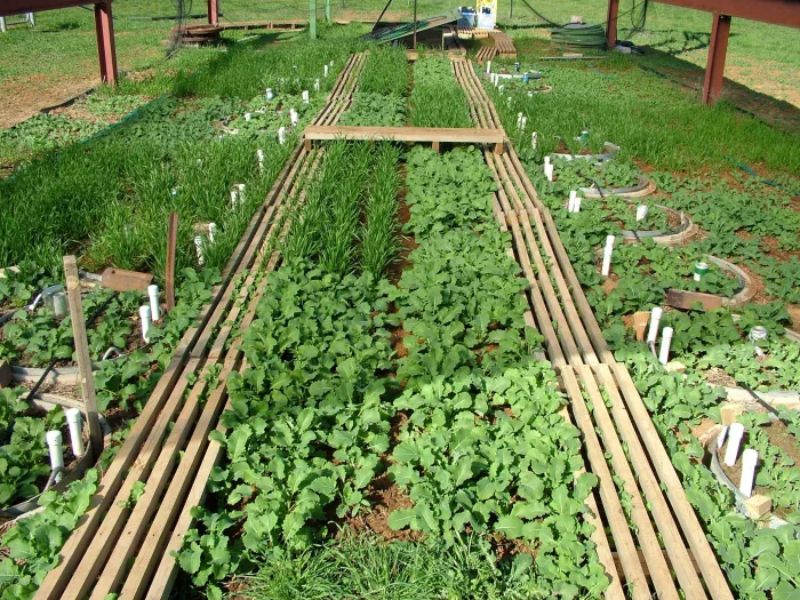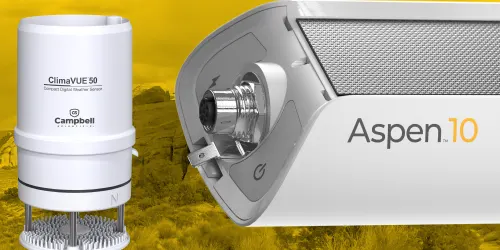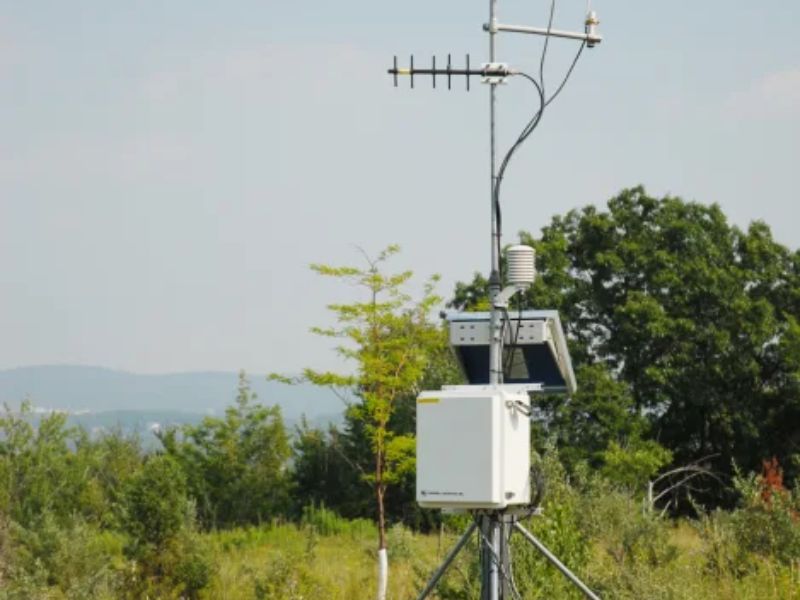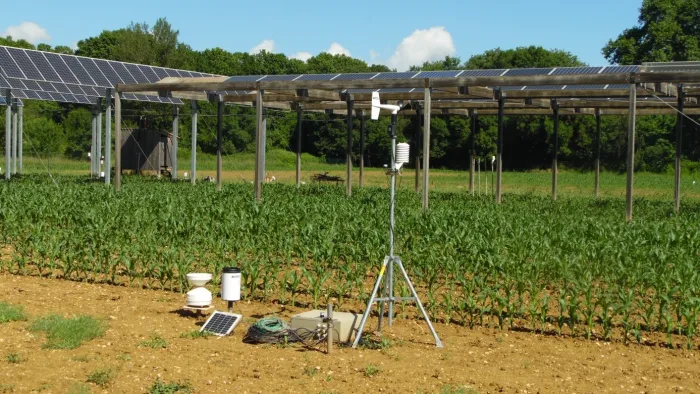Campbell Scientific instruments are used in a wide variety of environmental-research applications. Our data loggers are compatible with most sensors, and commonly measure meteorologic, hydrologic, and soil conditions. Data are often used in research facilities and applications evaluating relationships between different organisms as climate and other conditions change. Campbell soil sensor products are key to agricultural research, irrigation scheduling, forestry, watershed studies, leak detection, slope stability, and many other disciplines.
Product
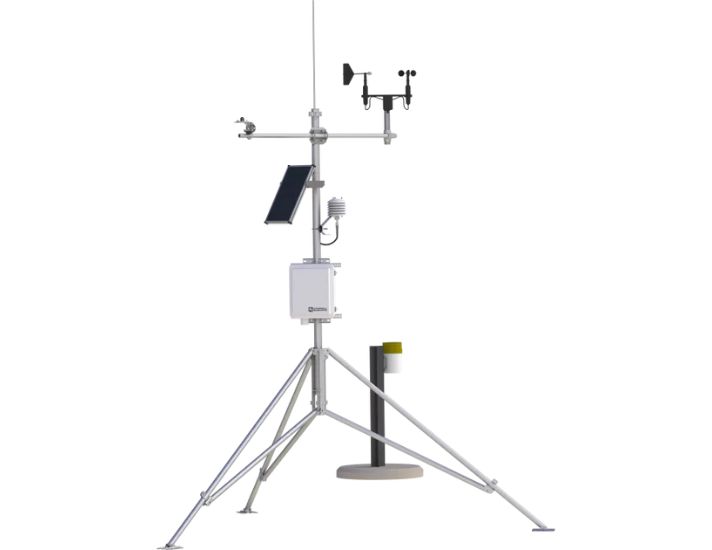
WxPRO Research – Grade Entry – Level Weather Station
The WxPRO™ is a cost-effective, research-grade weather station from Campbell Scientific, designed for diverse environmental applications. This portable station is suitable for both long-term and temporary deployments. Although it’s more affordable than the MetPRO™, it still features high-quality instruments essential for reliable environmental research. The station uses advanced sensors to measure weather phenomena, which can help calculate various weather-related metrics like evapotranspiration and wind chill.
The WxPRO can be ordered with standard parts or as a complete, preconfigured system for an additional fee. It is fully customizable, allowing the addition of specific sensors and communication devices to meet the requirements of different applications. Key measurements typically include:
-
- Wind speed
- Wind direction
- Air temperature
- Relative humidity
- Barometric pressure
- Precipitation
- Solar radiation
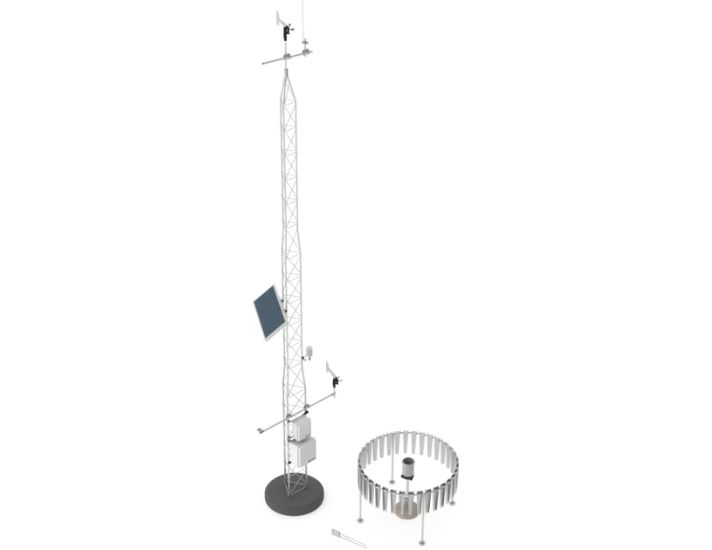
MesoPRO Research-Grade Mesonet Station
-
- Wind speed
- Wind direction
- Air temperature
- Relative humidity
- Barometric pressure
- Precipitation
- Solar radiation
- Soil volumetric water content
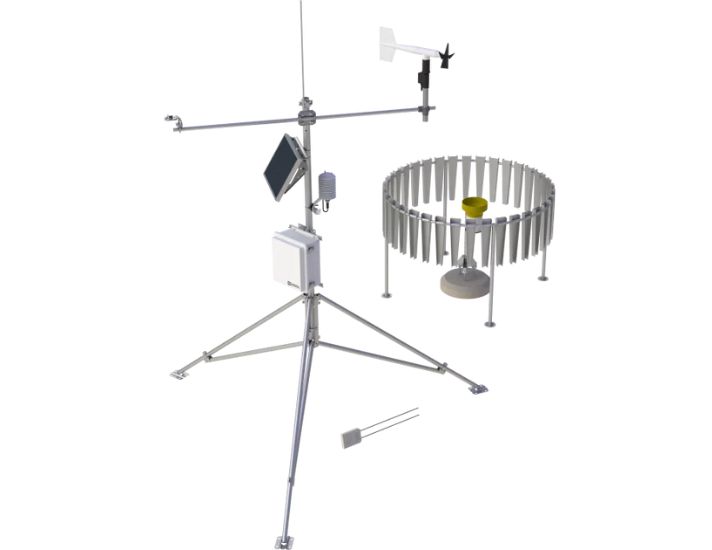
MetPRO Research-Grade Meteorological Station
-
- Wind speed
- Wind direction
- Air temperature
- Relative humidity
- Barometric pressure
- Precipitation
- Solar radiation
- Soil volumetric water content
Overview
Data Loggers
At the core of our systems is a programmable data logger that measures the sensors, then processes, stores, and transmits the data. These data loggers have programmable execution intervals, wide operating temperature ranges, and on-board instructions for commonly used sensors. If needed, channel capacity can be expanded using multiplexers.
Data are typically displayed and stored in the units of your choice (e.g., wind speed in mph, m/s, knots). Measurement processing and data storage are programmable, but measurements are typically made every minute then processed and stored at hourly and daily intervals (e.g., maximum, minimum, average). Data can be measured and stored more or less frequently (depending on the application and conditional sampling) based on events such as increased wind speeds, torrential rainfall, or diurnal cycle.
Battery power and solar power allow our data loggers to provide remote, unattended data collection over long periods of time. Our instrumentation has been proven in some of the harshest environments in the world.
PC-based software is customized to simplify data logger programming, data retrieval, and report generation. The data logger program can be modified at any time to accommodate different sensor configurations or data processing requirements.
Sensors
Almost any sensor can be measured by our data loggers, allowing monitoring systems to be customized for each site. Typical sensors used on our stations include, but are not limited to: wind speed, wind direction, solar radiation of various types, air temperature, water temperature, soil temperature, relative humidity, precipitation, snow depth, barometric pressure, soil moisture, soil electrical conductivity, and soil heat flux. Our systems interface to a variety of sensors that measure water level and water flow, as well as water quality parameters such as pH, conductivity, and dissolved oxygen. Our data loggers can interface directly to most air flow sensors, opacity meters, particle samplers, and gas analyzers.
Communications
We offer multiple communications options for data retrieval, allowing monitoring systems to meet specific application requirements. On-site data retrieval options include storage module, laptop computer, PDA, and data logger keyboard/display. Telecommunication options include short-haul, voice synthesized telephone, cellular telephone, radio frequency, multidrop, and satellite. Options can be mixed within the same network. Robust error-checking and low power-use ensure your data arrives uncorrupted and as scheduled. You can even automate the process of putting your data on the Internet.
View more
- Brochures: Agriculture and Soil Monitoring
- Brochures: Soil Water
- Brochures: Ecology and Natural Resources

